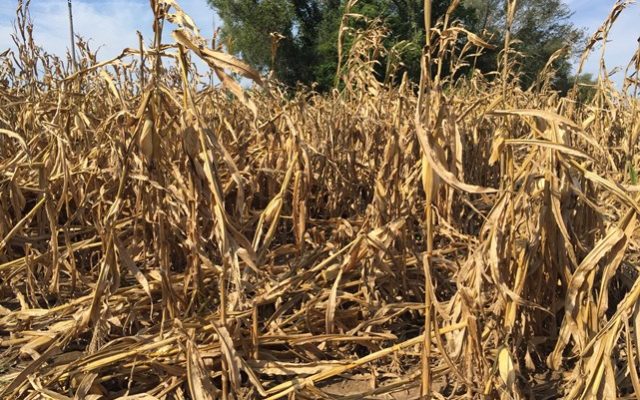Iowa Agencies Developing Drought Plan

(Radio Iowa) Three state agencies are developing guidelines and real-time resources for city and county officials who may have to restrict water usage during a drought emergency. Tim Hall of the Iowa Department of Natural Resources says the first-ever state “drought plan” would leave decisions about limiting water usage to local officials.
“We’re trying to set up a framework that will help local communities, local water utilities, emergency management folks be prepared to deal with a drought when it comes by answering those questions: ‘What should be do and when should be do it?’ and we can provide the data and the information that helps them make those decisions,” Hall says. The latest information from the U.S. Drought Mitigation Center shows there are “extreme” drought conditions in four northwest Iowa counties, but water shortages haven’t dropped to the level of what’s called an “exceptional” drought.
“We have seen droughts on a fairly regular schedule. We saw, of course, a significant drought in 2012,” Hall says. “We saw some very dry years in 2020 and 2021. This year is looking pretty dry as well.” In July, state officials hosted meetings in Sioux City, Cedar Rapids and Creston to hear from water utilities, local communities, county emergency managers and industries that use water. A final virtual meeting is being held this (Wednesday) morning with about 70 representatives of those groups.
“We’re almost to the end of the stakeholder piece,” Hall says. “We have a science and data team that’s looking at information that’s available and how we might establish some trigger mechanisms for the state, so we are right in the middle of developing of the heavy duty stuff of the plan right now.” Hall is the hydrology resources coordinator for the Iowa Department of Natural Resources. On Thursday, Hall will be issuing a statewide summary of water resources. He says water levels in some areas of northwest Iowa are alarmingly low.
“As the temperatures start to climb and we don’t see any precipitation, it could get a little bit rough in some places,” he says. The situation, though, isn’t currently as dire as the last major drought of 2012, according to Hall.
“But on a local basis, there are some areas of northwest Iowa that are struggling to see what their water situation is going to be in three weeks, four weeks, six weeks if we don’t get much rain,” Hall says. According to the state climatologist, unseasonably dry conditions persisted across Iowa last week and the drought intensified in the state’s northwest corner.



